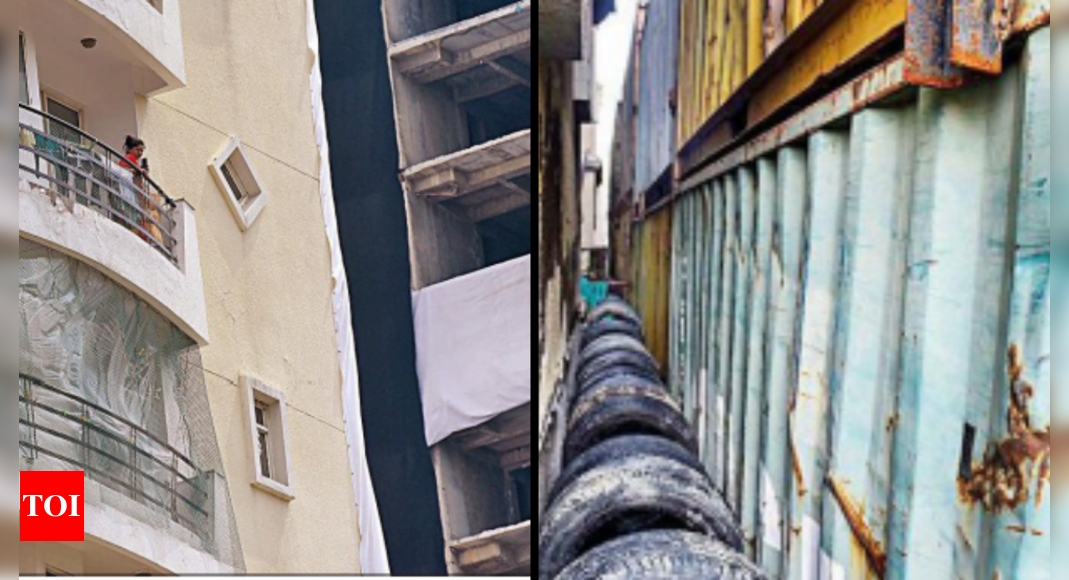Steel plates, berms and 1,400 truck tyres have been placed near two residential buildings and a gas pipeline on the directions of the Central Building Research Institute (CBRI) to contain vibrations of the blast that will bring down the Supertech twin towers on Sunday.NOIDA: Steel plates, berms and 1,400 truck tyres have been placed near two residential buildings and a gas pipeline on the directions of the Central Building Research Institute (CBRI) to contain vibrations of the blast that will bring down the Supertech twin towers on Sunday. The CBRI, which was entrusted with supervising and clearing every aspect of the demolition by the Supreme Court, was most concerned about damage to two buildings closest to the twin towers – Aster-2 and Aster-3 in Emerald Court – and a GAIL pipeline that is 16 metres away from ground zero. After a study of the projected impact of the implosion, which will be triggered by 3,700kg of explosives, the CBRI asked Edifice Engineering and Jet Demolition (both are responsible for bringing the towers down) to reduce ground vibrations. CBRI officials then suggested a novel method. Propping up used truck tyres along walls and debris-filled containers to soak in some of the blast waves from damaging the Aster buildings. For the GAIL pipeline, 3- to 4-metre-deep channel that supplies CNG to Noida and east Delhi, CBRI recommended placing steel plates topped with protection berms on the ground over it. A third layer was made up with the tyres, the officials said on Friday. The institute, its officials said, also pushed the developer to ensure that a structural audit of Emerald Court – the Supertech society in Sector 93A that is also the demolition site – was carried out in accordance with the Supreme Court’s directions. “CBRI did not allow the companies to charge the twin towers (the exercise to strap them with thousands of kilograms of explosives) until the audit was assured, and raised the issue of non-cooperation by the developer in the Supreme Court as well,” an official said. The audit, carried out earlier this month, also turned out to be crucial. The report found that 16 columns across Aster-2 and Aster-3 were dilapidated and weak. Subsequently, 10 of these were strengthened with concrete, but CBRI suggested injecting grout mix (water, cement and sand) into the remaining six and wrapping them with carbon fibre reinforcements to make up for the paucity of time before the demolition. Other measures included giving support to the beams and slabs in the two Aster buildings. Additionally, CBRI instructed the demolition companies to tear down a section of a lawn in Emerald Court that is badly damaged due to water seepage. A four-member team of CBRI, led by a senior principal scientist Dr Debi Prasanna Kanungo, is camping in Noida to oversee the demolition. The team also plans to study the implosion technique in detail after the blast as well. The twin towers – Apex and Ceyane – will be demolished at 2.30pm on Sunday. Around 13 layers of geotextile fabric and iron mesh have been used over the structures to limit debris projectile and act as a barrier for air pressure waves. FOLLOW US ON SOCIAL MEDIAFacebookTwitterInstagramKOO APPYOUTUBE
Source: https://timesofindia.indiatimes.com/city/noida/noida-steel-plates-1400-truck-tyres-in-cbri-safety-plan-for-buildings-near-twin-towers/articleshow/93809552.cms

